How a London gallerist uncovered a trove of 1960s and 70s pulp illustration
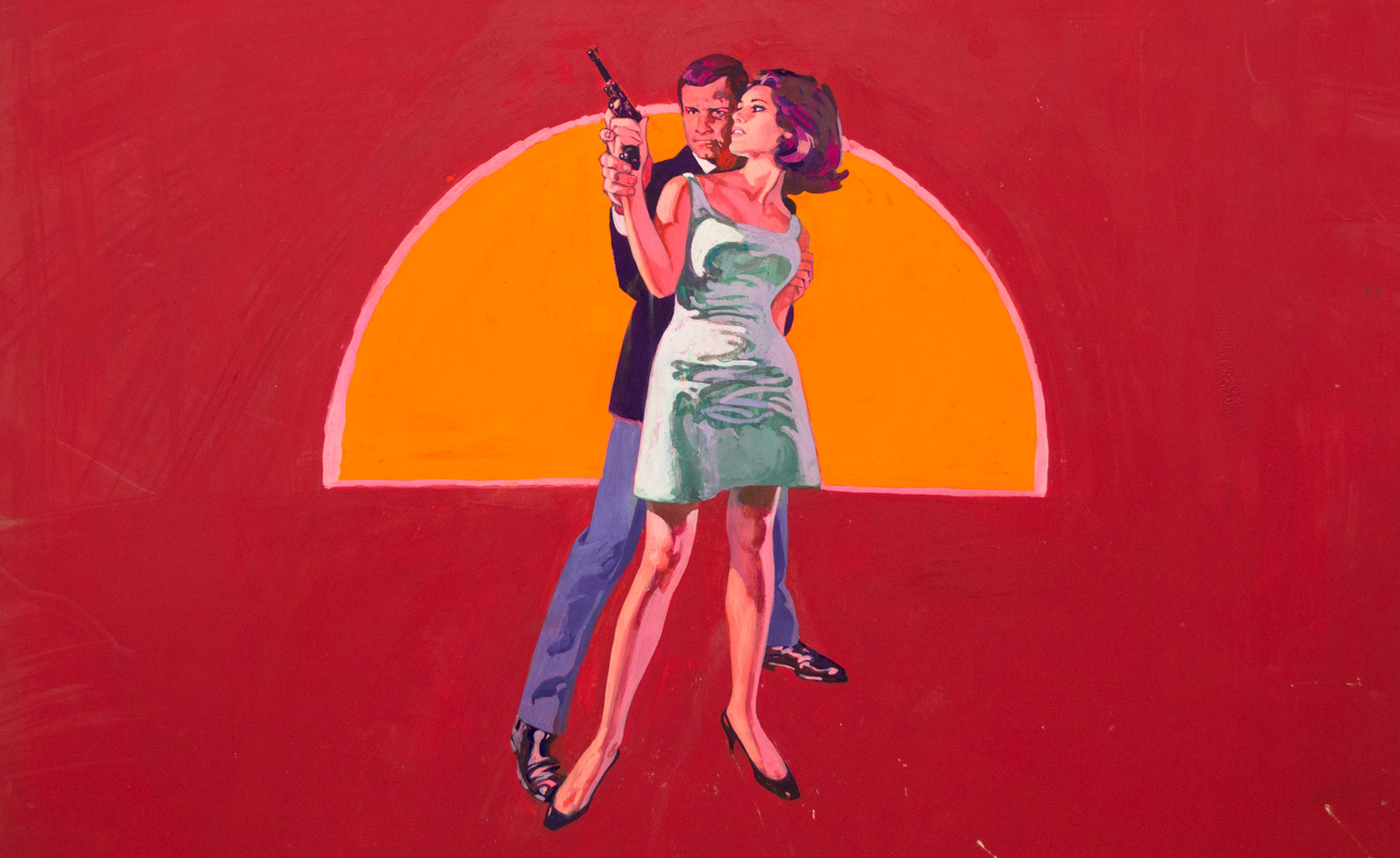
The worlds evoked by 1960s pulp novels were bombastic, beautiful and base. Filled with larger than life characters, sensational storylines, and love triangles of pin-up proportions, it was the Netflix of the 60s.
Behind the scenes of the novels’ production, however, manufactured glamour gave way to dusty London and Italian agencies, filled with wildly skilled illustrators. The likes of Renato Fratini, Michael Johnson and Gianluigi Coppola worked all hours, rattling off impeccable sketches, with nothing for inspiration but the rugged notes of speed-readers employed to consume manuscript after manuscript.
These illustrators built an aesthetic – which in turn built an industry – on the back of bits of old board. Though the paperbacks were published in their millions on cheap, wood-pulp paper (the industry’s namesake), many of the original illustrations were discarded, lost or seen as worthless.
Lever Gallery co-founder and director Didier Madoc-Jones knows better. He has dedicated years hunting them in attics and online stores, and now, the walls of his London gallery are lined with the oft-forgotten patrons of pulp, providing glimmers of treasure in trash fiction in the exhibition ‘Uncovered: Illustrating the Sixties and Seventies’.
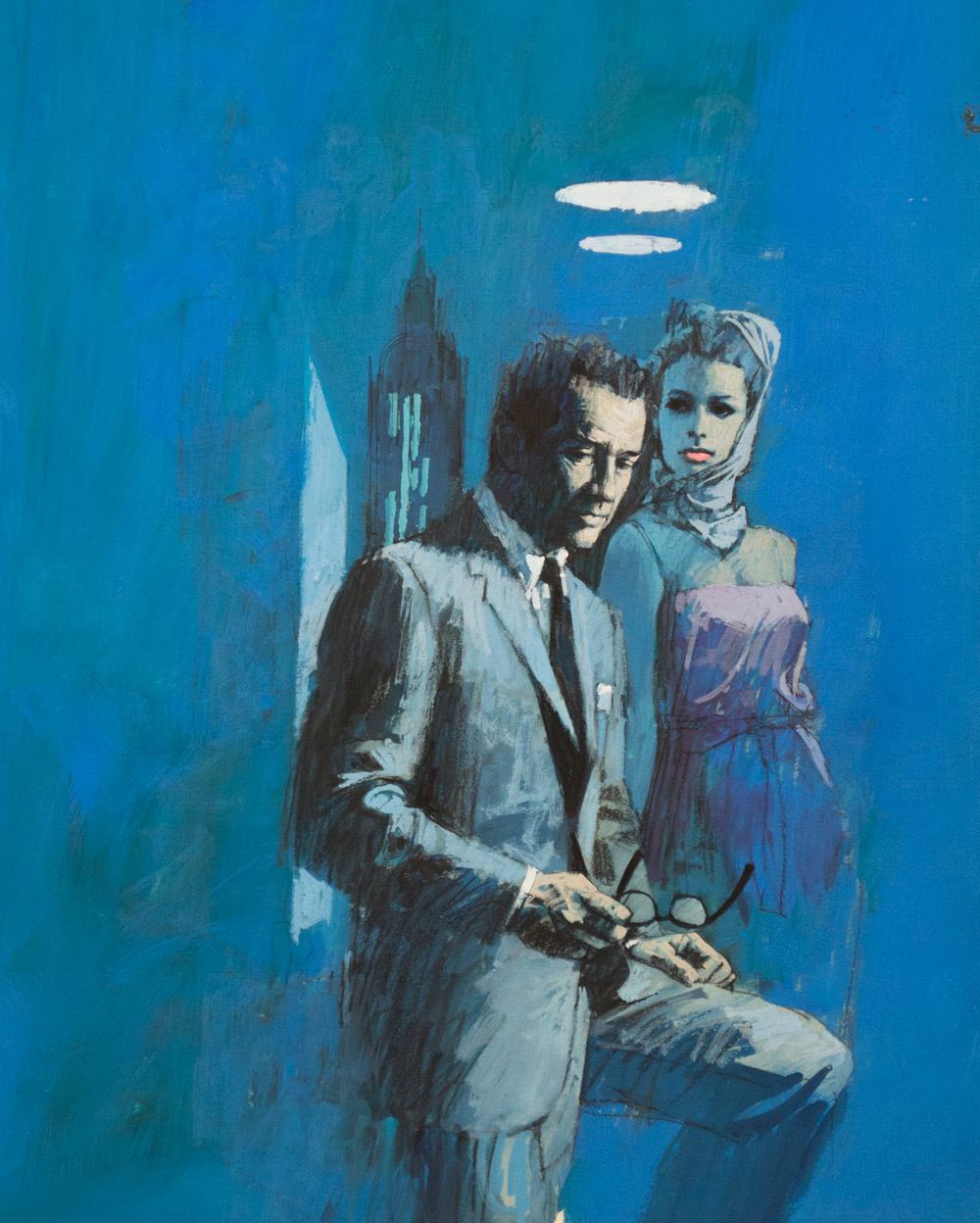
Renato Fratini, for The Hucksters, 1965.
‘The joy of pulp illustration was its lack of subtlety, and its over-exaggeration,’ he says. ‘It helped publications off the shelves, tempting readers into the charismatic world of the bestseller.’
Before long, publishers of ‘more respectable’ literature were mining the same rich vein. In the late 60s, pulp illustration found itself nestling in the arch of the high brow, its glamorous promise employed to shift books penned by the likes of Simone de Beauvoir, Sinclair Lewis and CP Snow. All of a sudden, the works of Renato Fratini and Michael Johnson were lining the bookshelves of a readership that had probably never heard of them.
But, just as it was easing into its new life of leather-bound luxury, pulp illustration lost out to the 1970s new kid on the block – photography, which ushered in an era of harder edged realism.
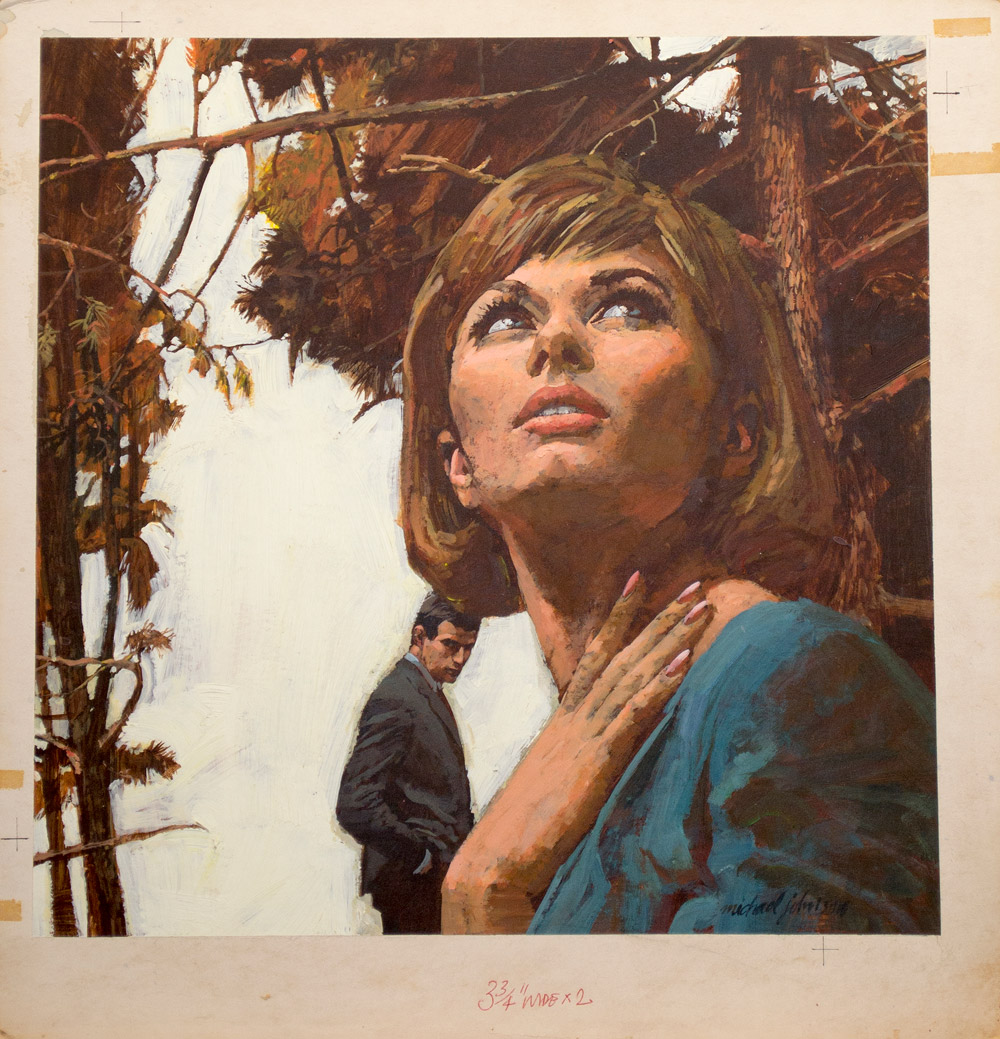
Woman with Pines, 1964-65, by Michael Johnson.
Despite being bumped from the popular consciousness, Madoc-Jones believes that the original illustrations deserve to be ‘appreciated for their artistic merit’ today. ‘When you look closely at the original works we have presented in the gallery, they’re more akin to abstractions, with great sweeping brush strokes. The level of talent these artists had was quite unbelievable.’ Indeed, the work of Eduardo Paolozzi, Richard Hamilton and Peter Blake can be read in the colourful, post-war Americana of the drawings.
Nonetheless, pulp was the art of the hired gun, managed by deadline dealers. That these illustrators were able to turn around works of such dynamism in a matter of moments is perhaps their greatest cache. It’s something alien to our mindset in this digitally reliant age, where if we want to add a layer or remove a detail, we turn to Photoshop, not a new piece of chipboard.
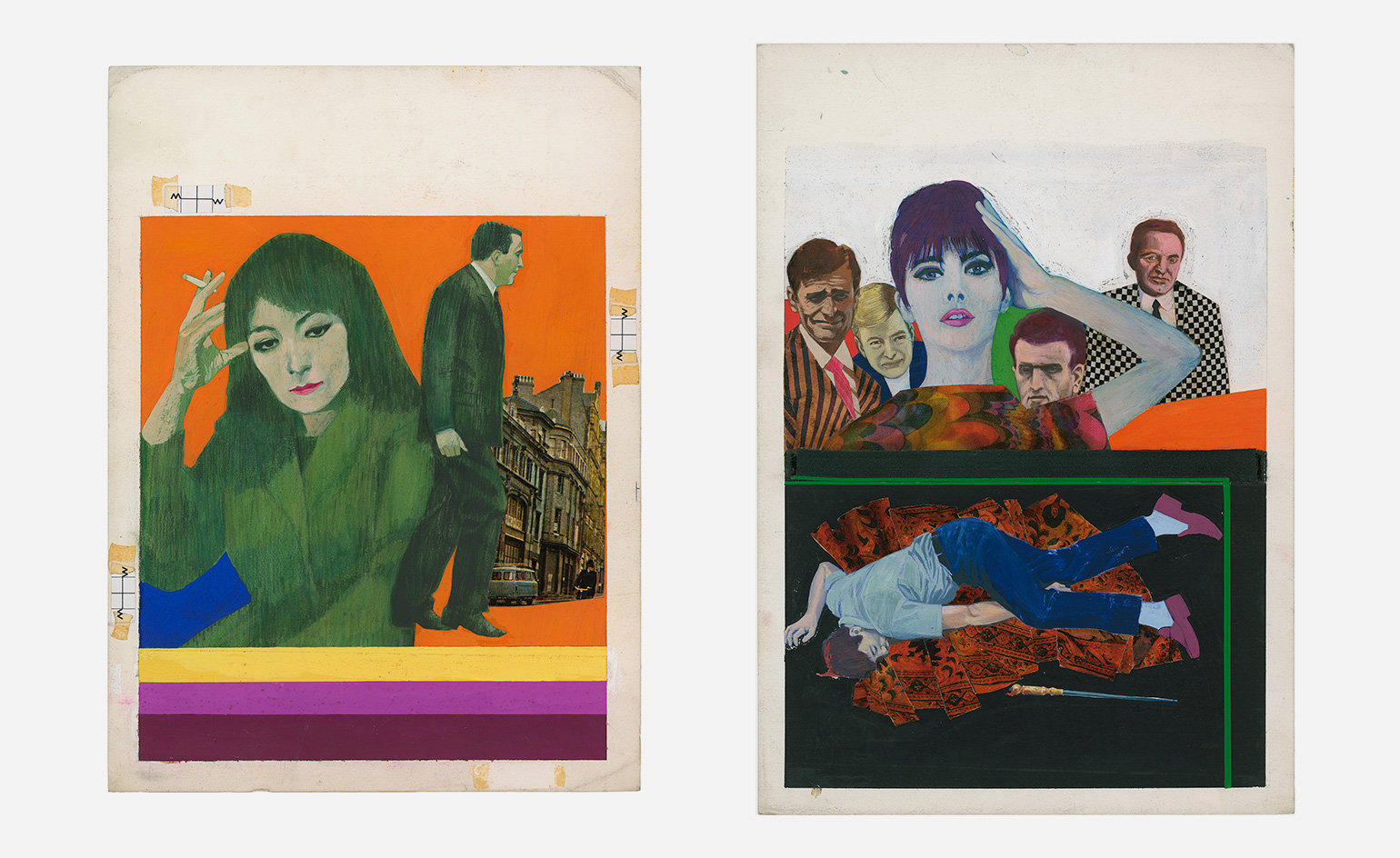
Left, Homecomings, by Gianluigi Coppola, 1966. Right, The Case of the Curious Bride, by Gianluigi Coppola, 1966.
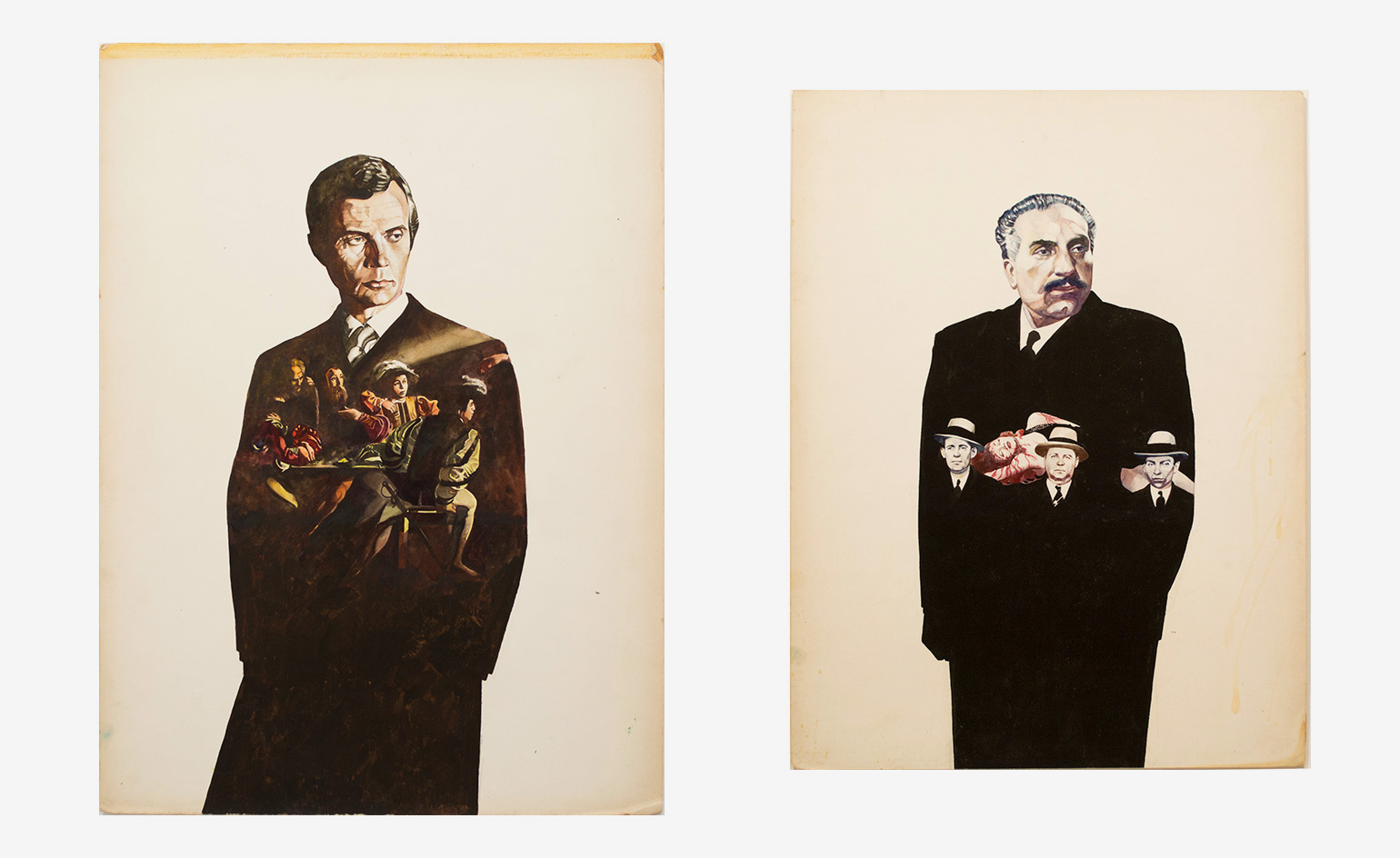
Left, The Oldest Confession, by Gianluigi Coppola, 1972. Right, Mile High, by Gianluigi Coppola, c1972.
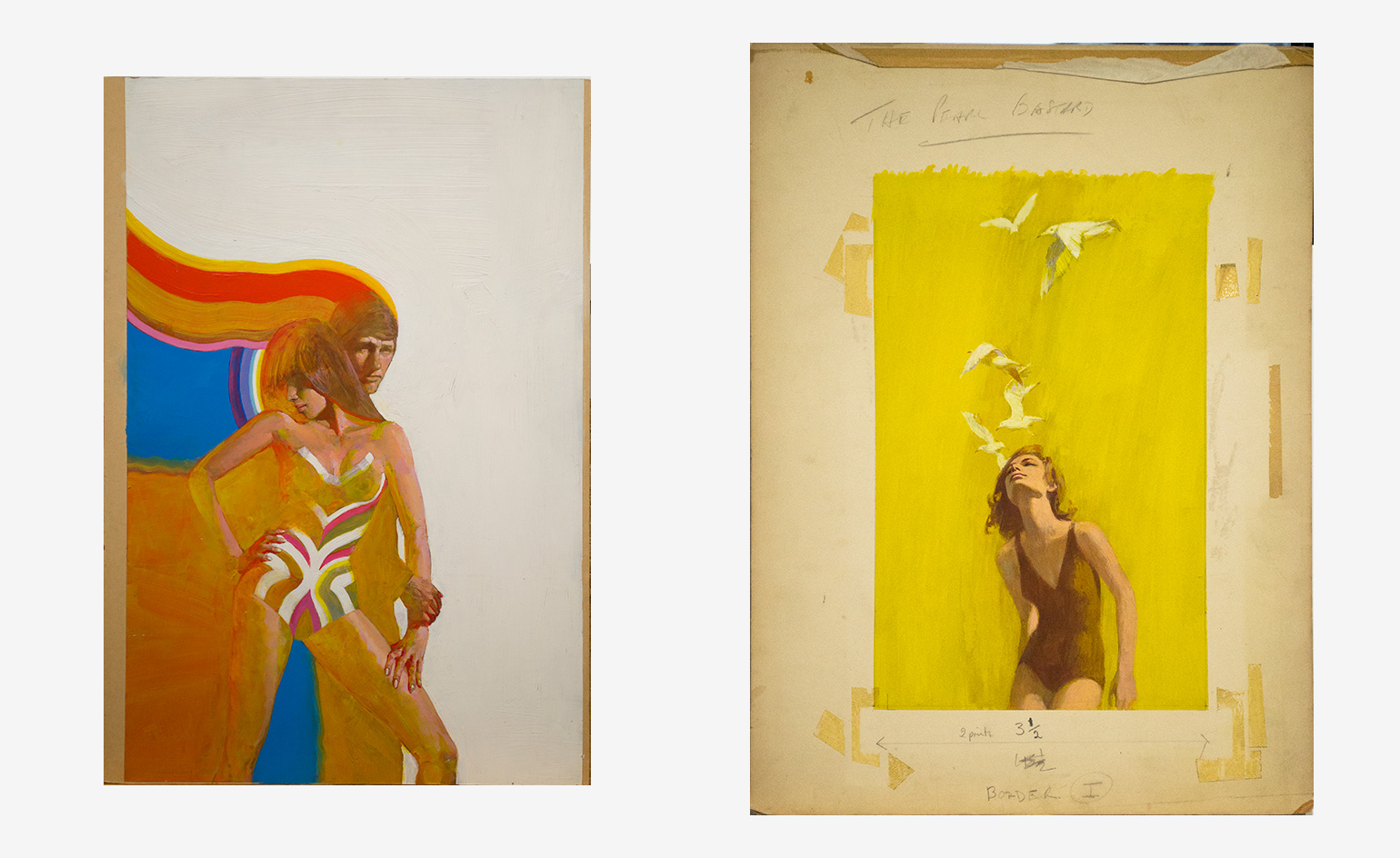
Left, Psychedelic Couple, by Michael Johnson, c1966. Right, The Pearl Bastard, by Renato Fratini, c1960s.
INFORMATION
‘Uncovered: Illustrating the Sixties and Seventies’ is on view until 24 March. For more information, visit the Lever Gallery website
ADDRESS
Lever Gallery
153-157 Goswell Road
London EC1V 7HD
Wallpaper* Newsletter
Receive our daily digest of inspiration, escapism and design stories from around the world direct to your inbox.
Elly Parsons is the Digital Editor of Wallpaper*, where she oversees Wallpaper.com and its social platforms. She has been with the brand since 2015 in various roles, spending time as digital writer – specialising in art, technology and contemporary culture – and as deputy digital editor. She was shortlisted for a PPA Award in 2017, has written extensively for many publications, and has contributed to three books. She is a guest lecturer in digital journalism at Goldsmiths University, London, where she also holds a masters degree in creative writing. Now, her main areas of expertise include content strategy, audience engagement, and social media.
-
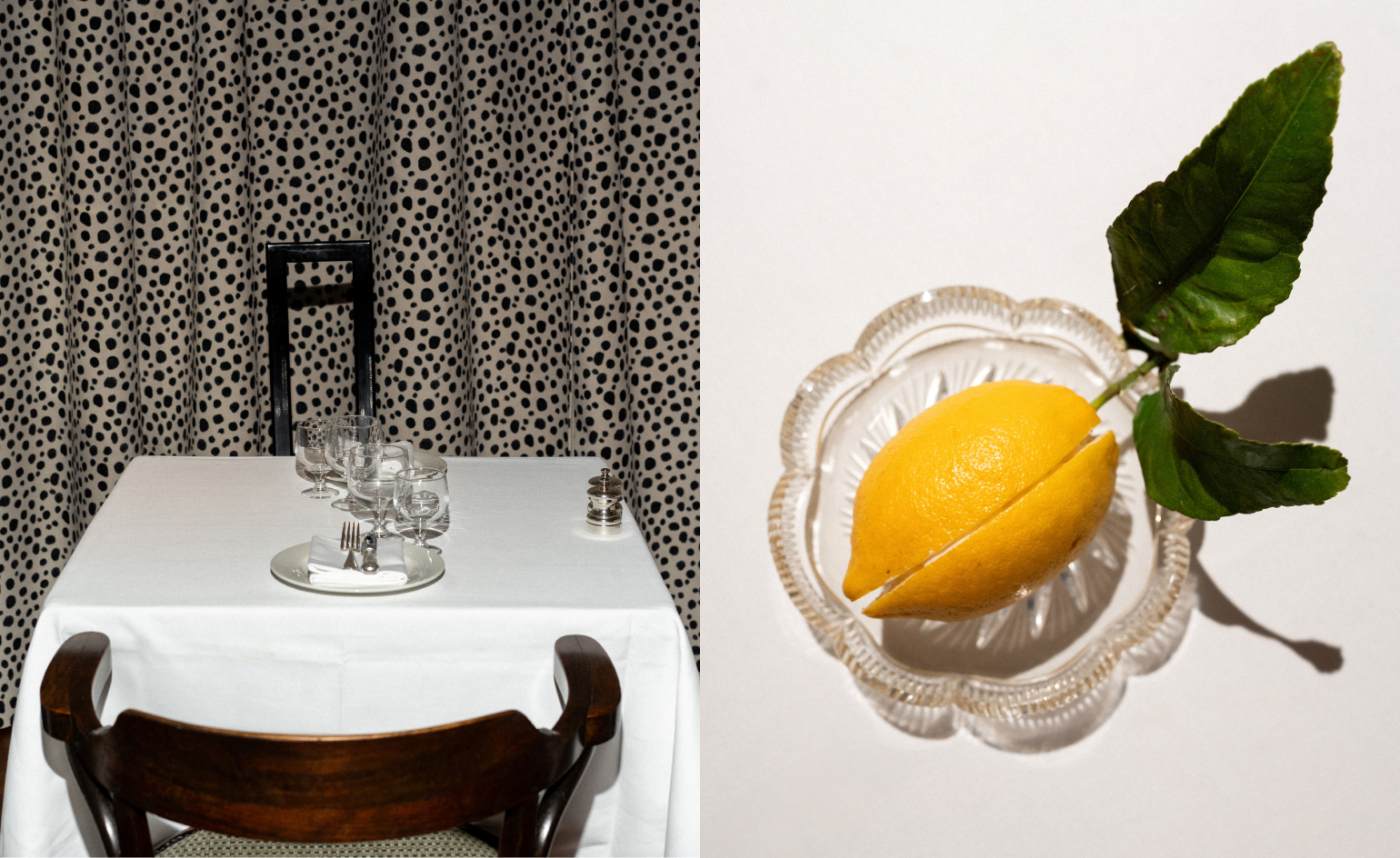 Marylebone restaurant Nina turns up the volume on Italian dining
Marylebone restaurant Nina turns up the volume on Italian diningAt Nina, don’t expect a view of the Amalfi Coast. Do expect pasta, leopard print and industrial chic
By Sofia de la Cruz
-
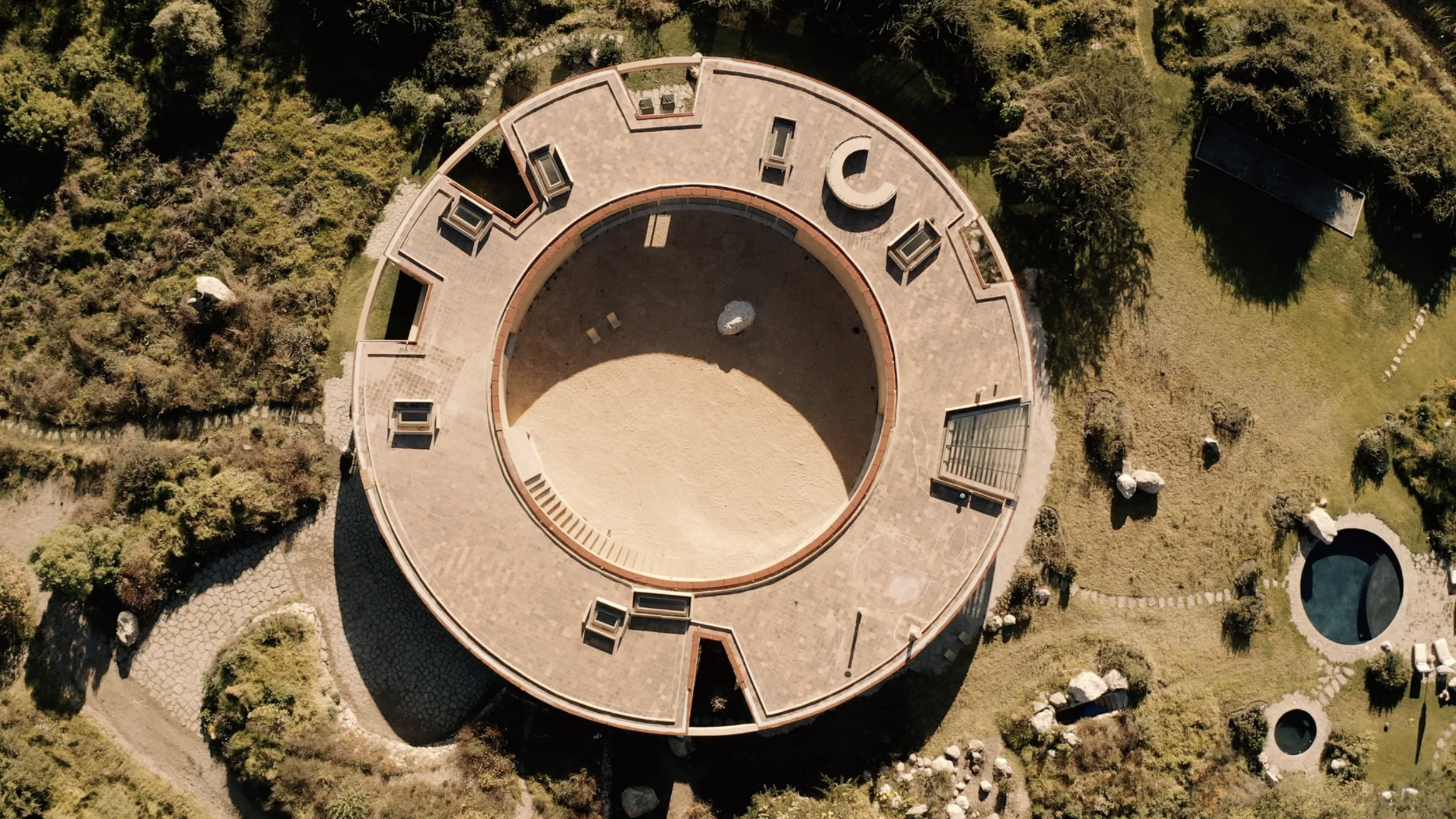 Tour the wonderful homes of ‘Casa Mexicana’, an ode to residential architecture in Mexico
Tour the wonderful homes of ‘Casa Mexicana’, an ode to residential architecture in Mexico‘Casa Mexicana’ is a new book celebrating the country’s residential architecture, highlighting its influence across the world
By Ellie Stathaki
-
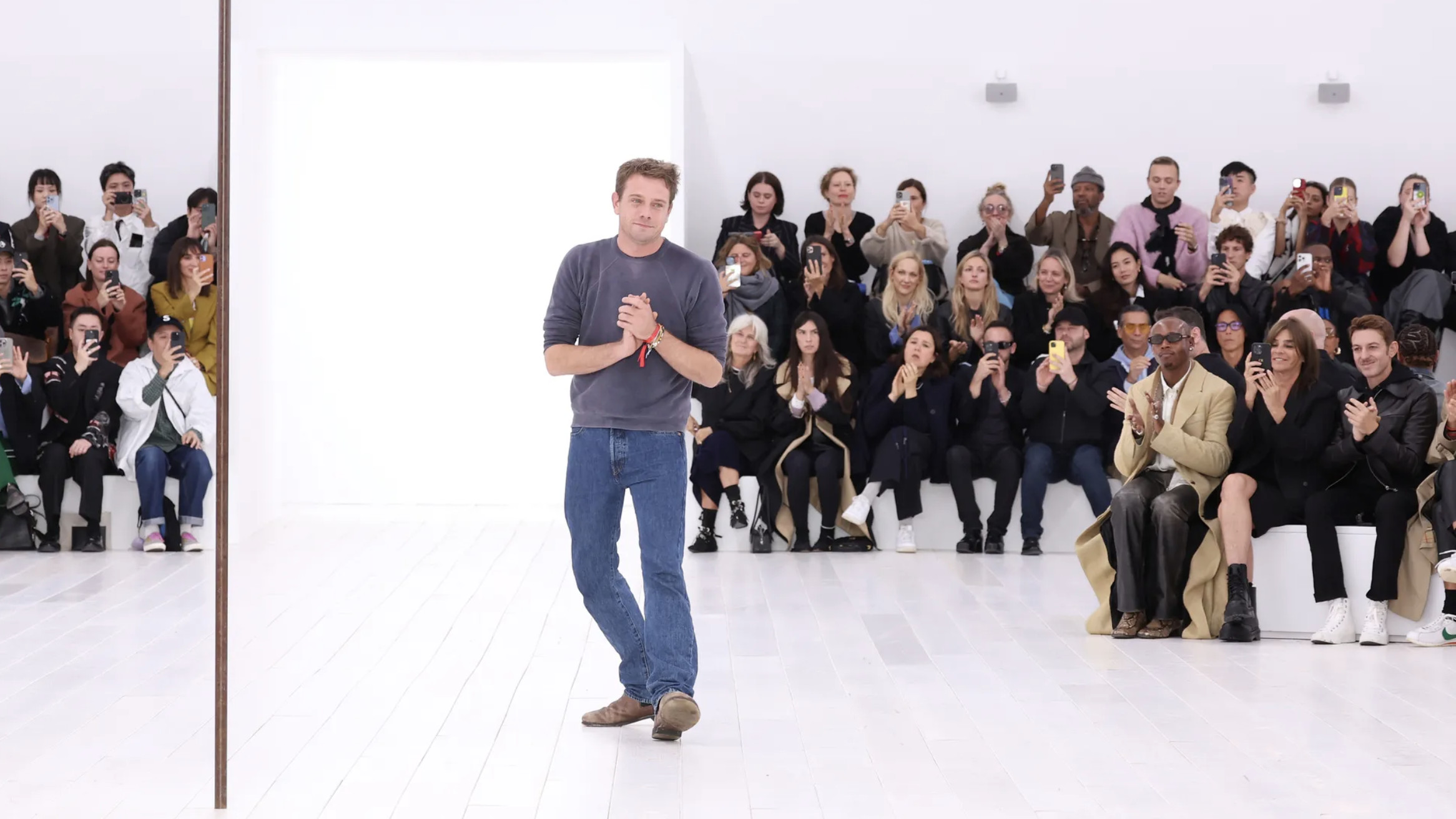 Jonathan Anderson is heading to Dior Men
Jonathan Anderson is heading to Dior MenAfter months of speculation, it has been confirmed this morning that Jonathan Anderson, who left Loewe earlier this year, is the successor to Kim Jones at Dior Men
By Jack Moss
-
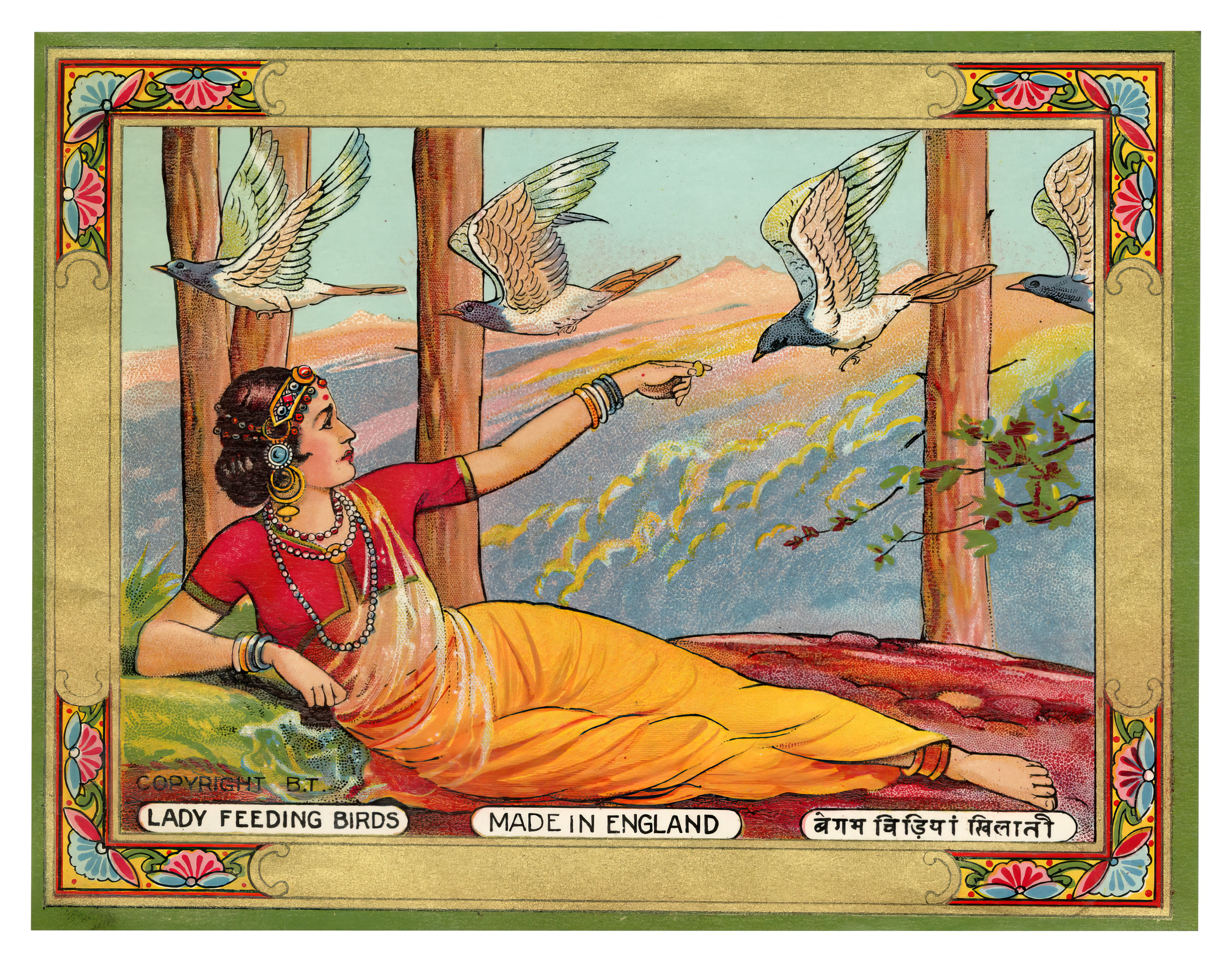 The art of the textile label: how British mill-made cloth sold itself to Indian buyers
The art of the textile label: how British mill-made cloth sold itself to Indian buyersAn exhibition of Indo-British textile labels at the Museum of Art & Photography (MAP) in Bengaluru is a journey through colonial desire and the design of mass persuasion
By Aastha D
-
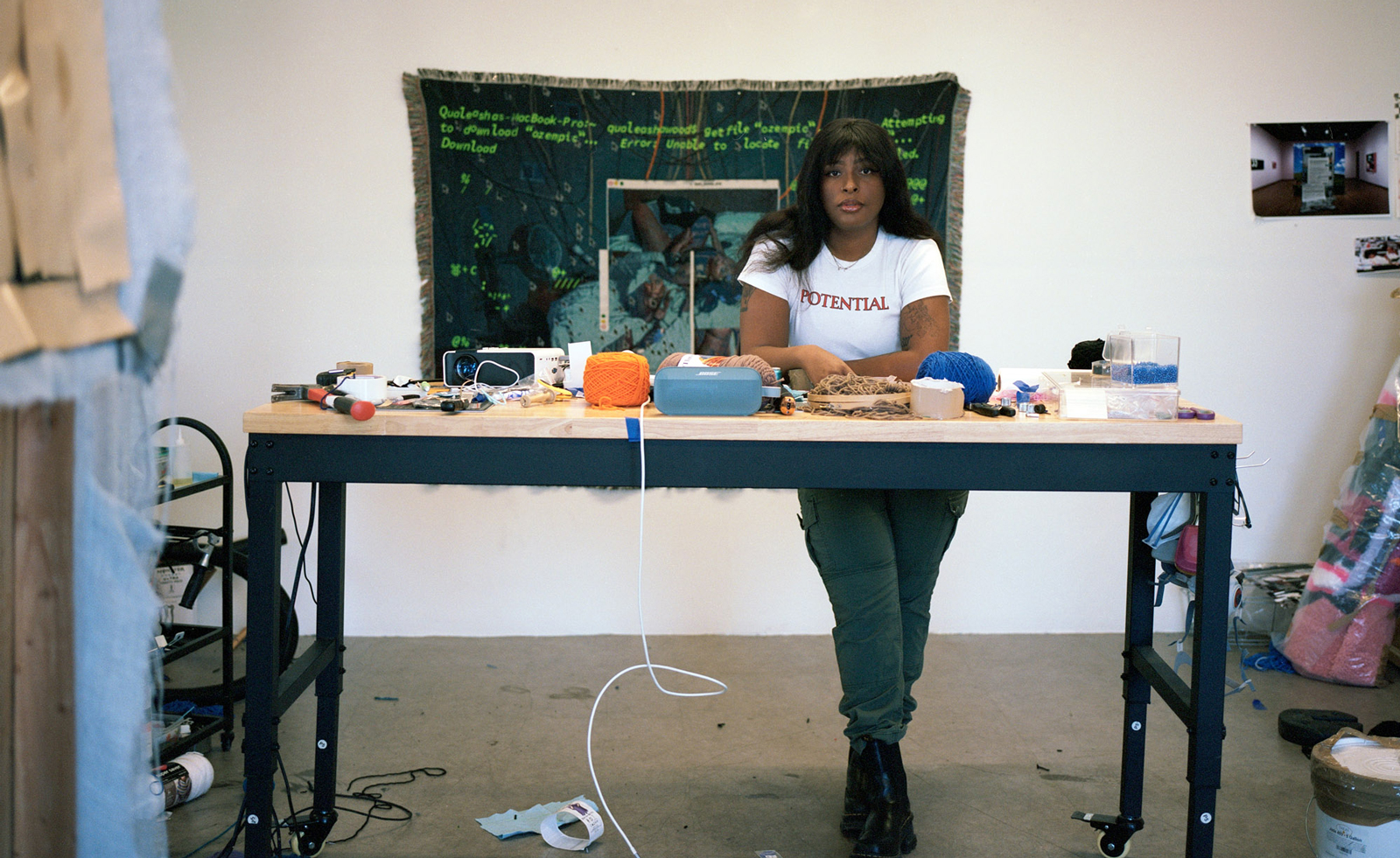 Artist Qualeasha Wood explores the digital glitch to weave stories of the Black female experience
Artist Qualeasha Wood explores the digital glitch to weave stories of the Black female experienceIn ‘Malware’, her new London exhibition at Pippy Houldsworth Gallery, the American artist’s tapestries, tuftings and videos delve into the world of internet malfunction
By Hannah Silver
-
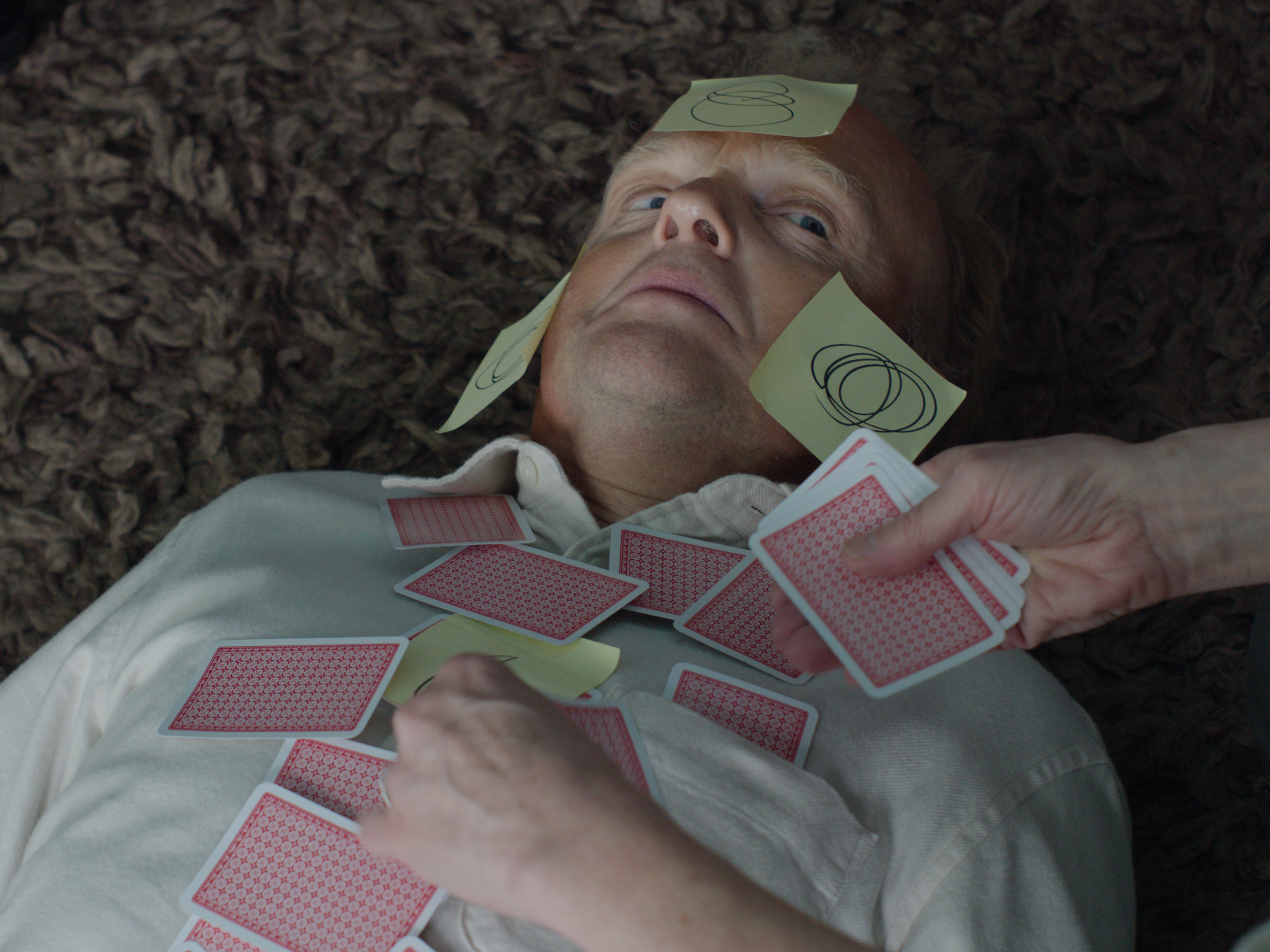 Ed Atkins confronts death at Tate Britain
Ed Atkins confronts death at Tate BritainIn his new London exhibition, the artist prods at the limits of existence through digital and physical works, including a film starring Toby Jones
By Emily Steer
-
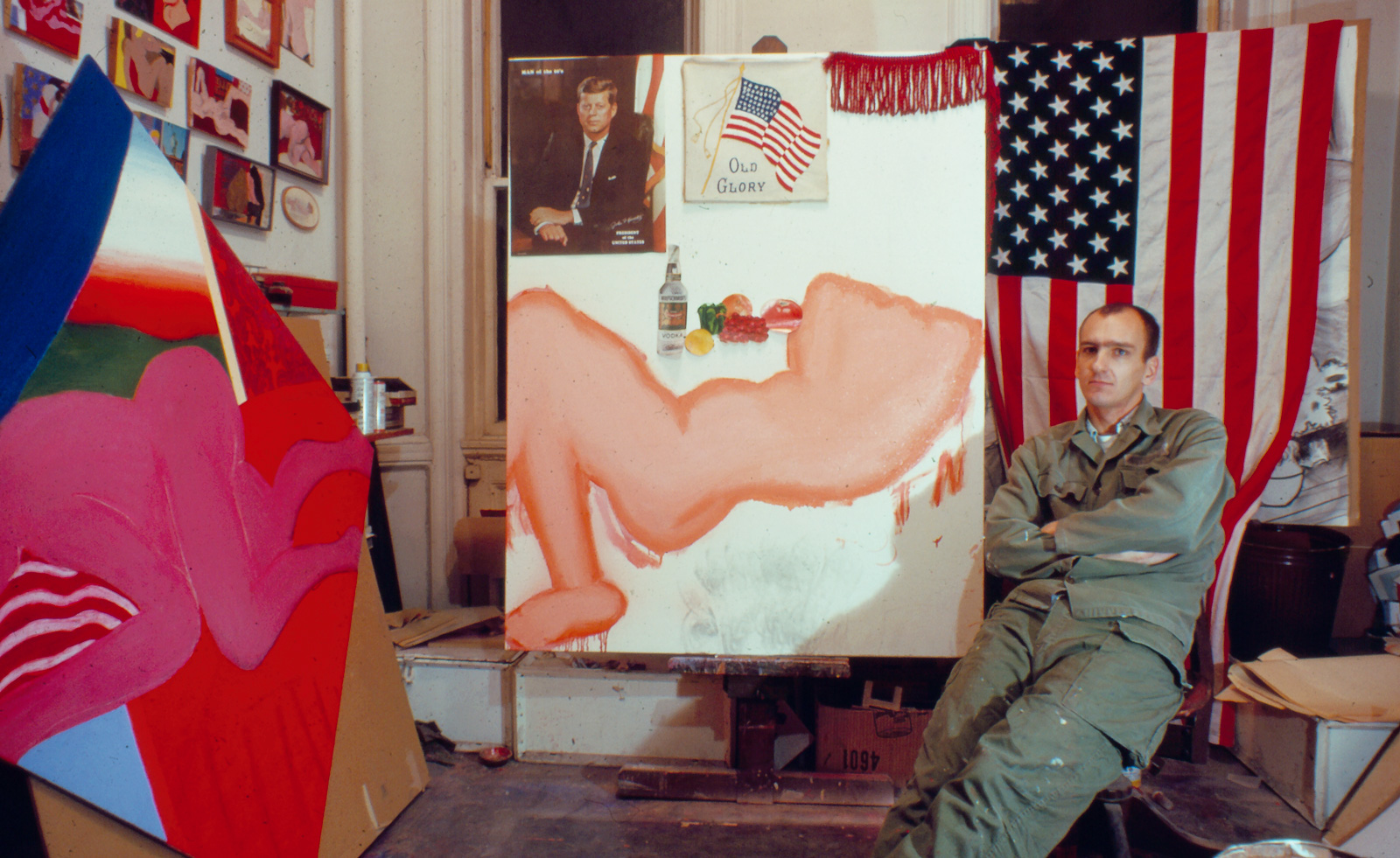 Tom Wesselmann’s 'Up Close' and the anatomy of desire
Tom Wesselmann’s 'Up Close' and the anatomy of desireIn a new exhibition currently on show at Almine Rech in London, Tom Wesselmann challenges the limits of figurative painting
By Sam Moore
-
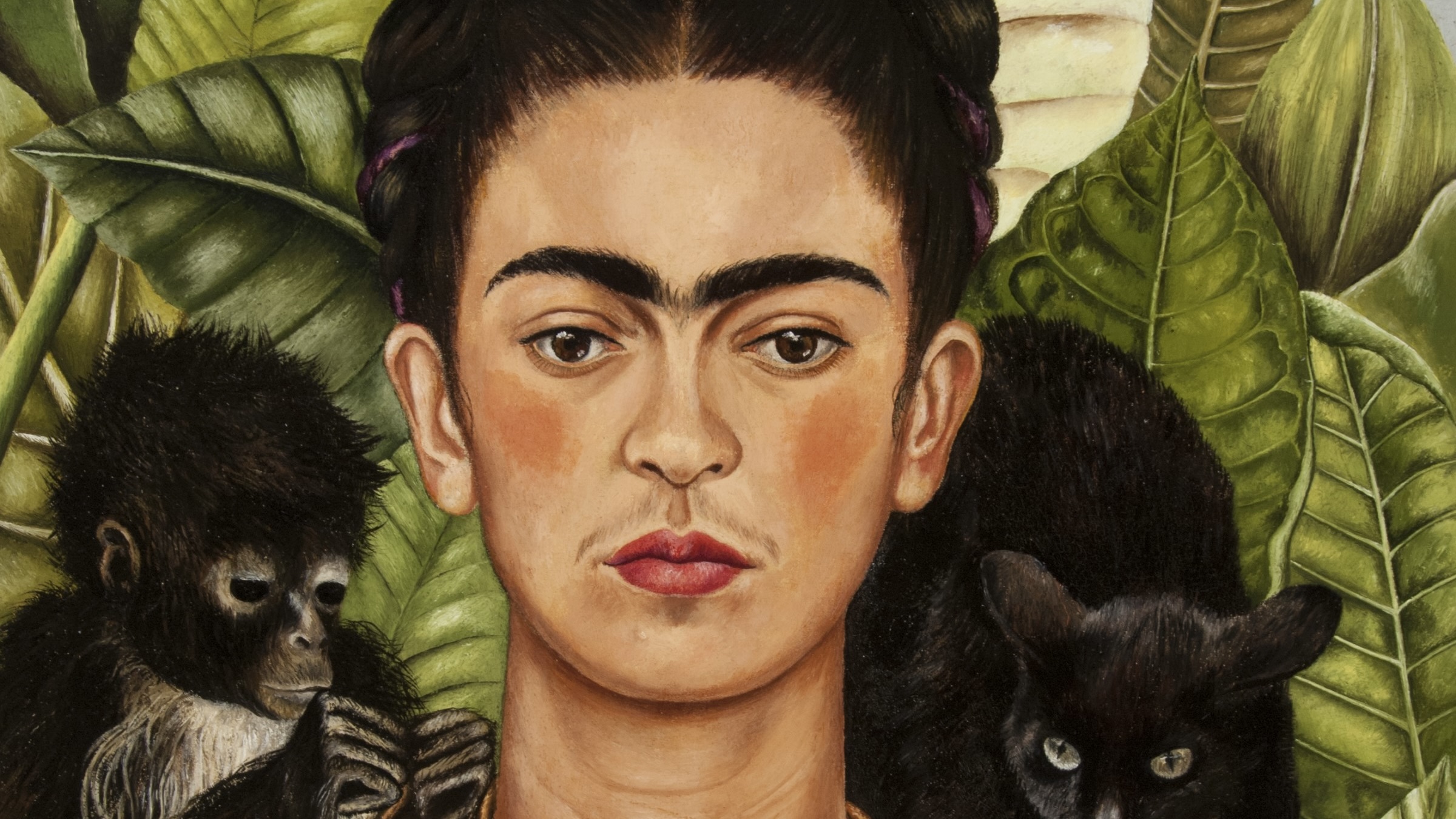 A major Frida Kahlo exhibition is coming to the Tate Modern next year
A major Frida Kahlo exhibition is coming to the Tate Modern next yearTate’s 2026 programme includes 'Frida: The Making of an Icon', which will trace the professional and personal life of countercultural figurehead Frida Kahlo
By Anna Solomon
-
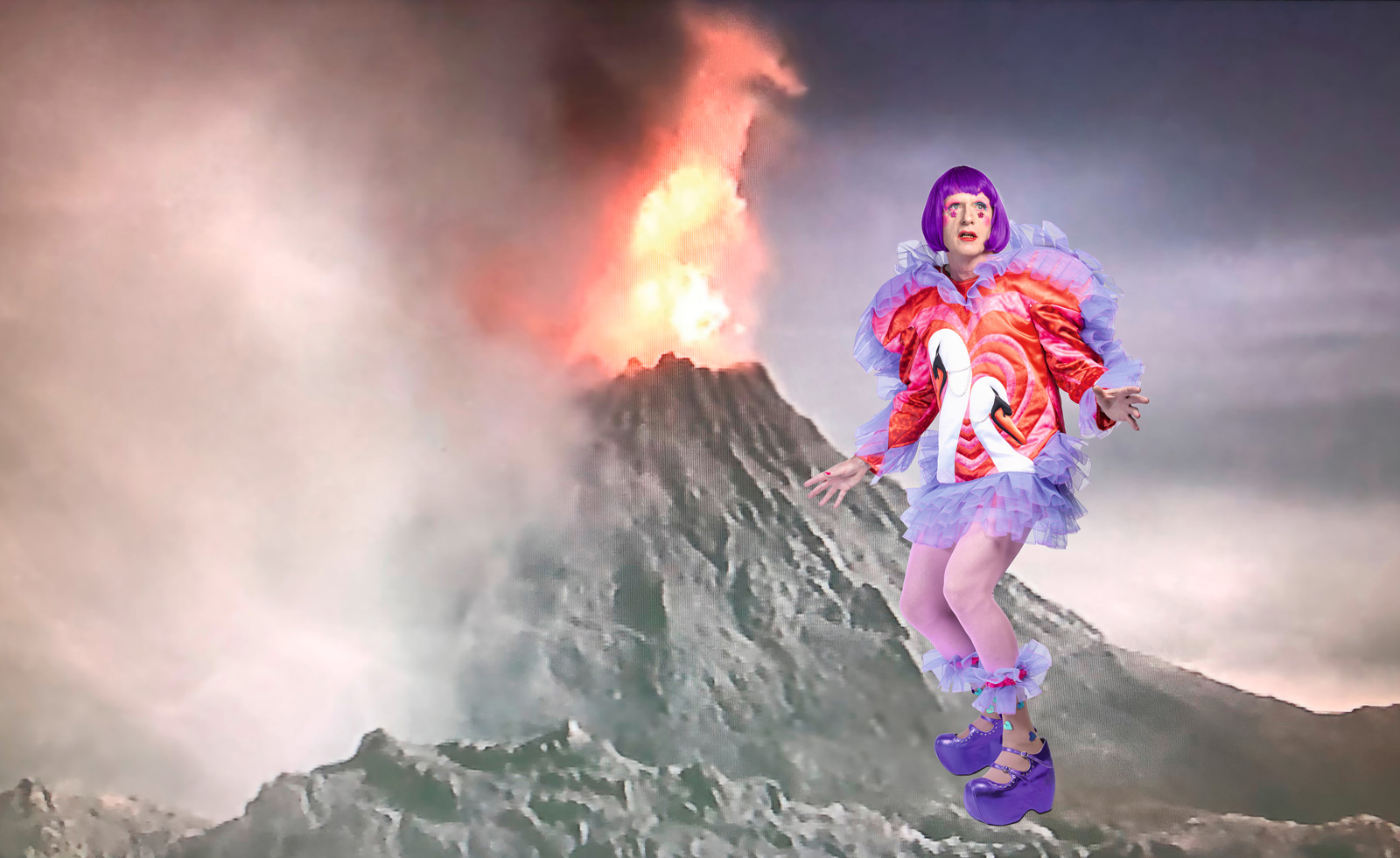 A portrait of the artist: Sotheby’s puts Grayson Perry in the spotlight
A portrait of the artist: Sotheby’s puts Grayson Perry in the spotlightFor more than a decade, photographer Richard Ansett has made Grayson Perry his muse. Now Sotheby’s is staging a selling exhibition of their work
By Hannah Silver
-
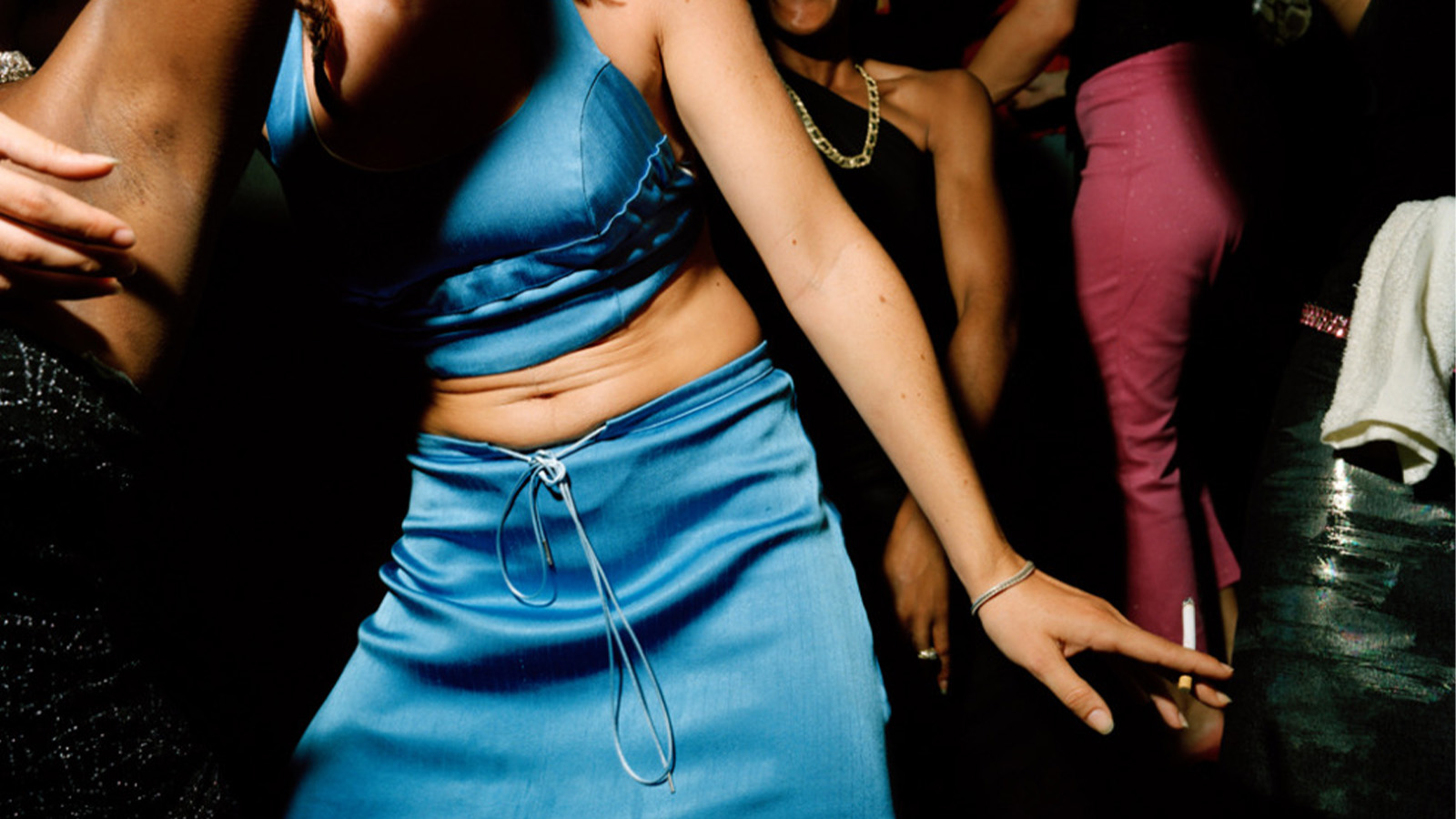 From counter-culture to Northern Soul, these photos chart an intimate history of working-class Britain
From counter-culture to Northern Soul, these photos chart an intimate history of working-class Britain‘After the End of History: British Working Class Photography 1989 – 2024’ is at Edinburgh gallery Stills
By Tianna Williams
-
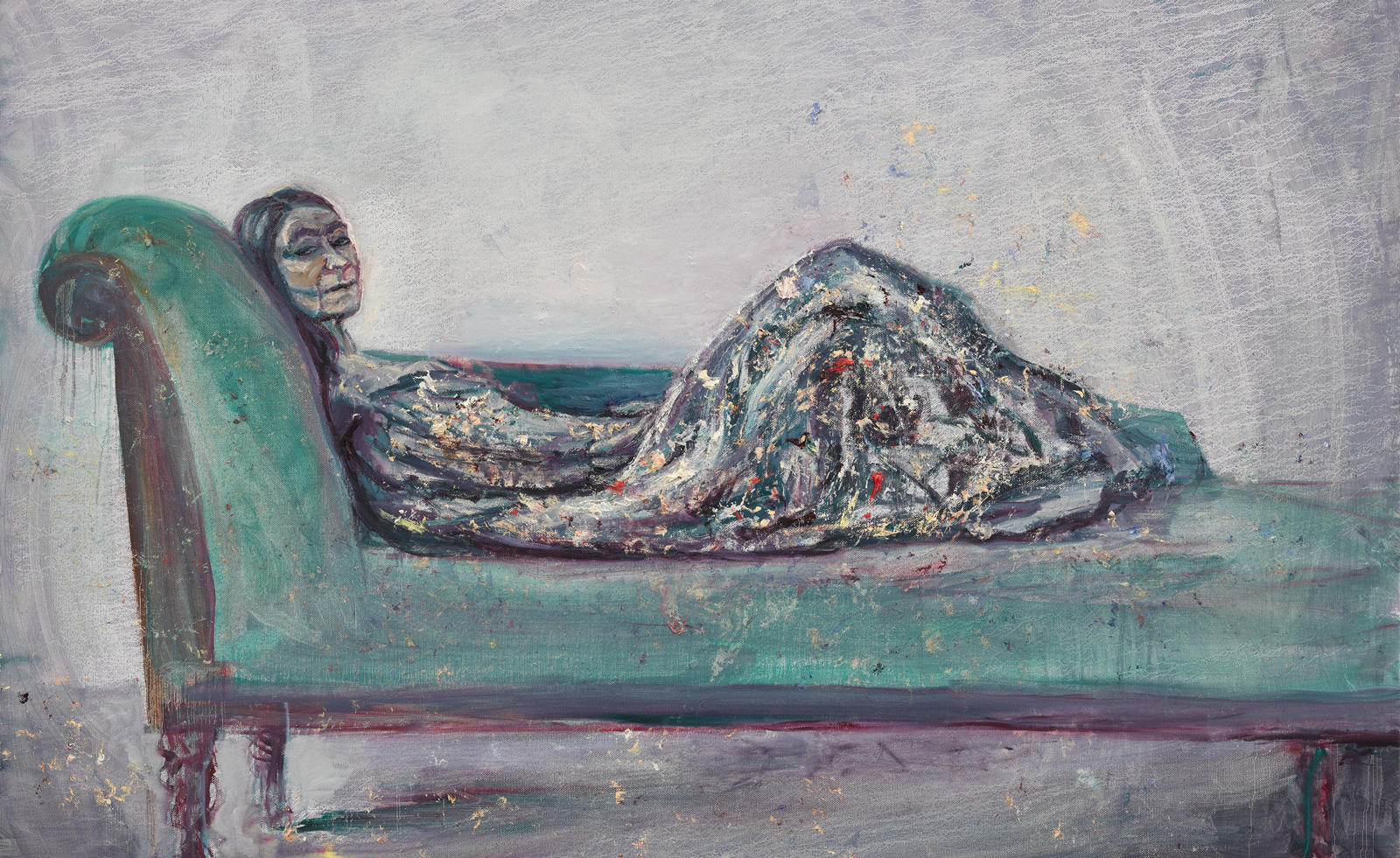 Celia Paul's colony of ghostly apparitions haunts Victoria Miro
Celia Paul's colony of ghostly apparitions haunts Victoria MiroEerie and elegiac new London exhibition ‘Celia Paul: Colony of Ghosts’ is on show at Victoria Miro until 17 April
By Hannah Hutchings-Georgiou